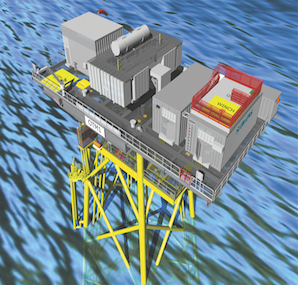
World’s largest offshore wind array to go ahead
As the preferred bidder for Hornsea One, Siemens expects to deploy the 7 MW WTG that it has been trialling at Østerild in Denmark. Dong made its final investment decision earlier this year, clearing the way for the start of construction of the 1.2 GW array. It will become the largest offshore wind farm in the world, almost twice the size of the current record holder, London Array, and is the final project in Dong’s target to build 6.5 GW of offshore wind capacity by 2020. It will also be a major component in Dong’s policy of driving down significantly the cost of offshore wind production. “Reaching our strategic target is important, as volume is required to reduce the cost of a new technology,” commented Dong CEO Henrik Poulsen at the time. “It is vital in order to make all players in the value chain advance up the learning curve.”
Hornsea was granted a contract for difference (CFD) by the UK government in April 2014 and will receive a fixed tariff for energy production for its first 15 years of production. It is due to be commissioned in 2020.
The project is located 120 km off the Yorkshire coast and covers an area of 407 square km. It is currently in the pre-construction development stage. A2SEA’s purpose-built offshore installation vessel Sea Installer will be deployed to erect the 174 turbines of the array.
Biggest order
For East Anglia One Siemens is to supply, install and commission 102 of its 7 MW 164m rotor diameter wind turbines, representing its largest order to date for the 7 MW unit. The customer is ScottishPower Renewables, a subsidiary of Iberdrola SA. The 714 MW wind power plant will also be the largest project in terms of capacity for Siemens to date. It has also been awarded the contract for servicing the wind farm for an initial period of five years.
East Anglia One is to be erected around 45 km off the English east coast over an area of 300 square km. The 102 direct-drive wind turbines of type SWT-7.0-154 will be installed on jacket foundations. The nacelles will be manufactured in Cuxhaven, Germany, and the blades at its Hull facility in the UK. The port of Great Yarmouth will serve as the pre-assembly harbour for the project. The first wind turbines are scheduled to be installed in the summer of 2019, with the start of commercial operation scheduled for 2020.
Siemens has also been awarded a long-term service agreement which includes remote monitoring and diagnostics services. The logistics approach will feature the availability of a helicopter that will be based near the port of Lowestoft and used mainly in winter when the use of crew transfer vessels is not feasible owing to high wave conditions and rough seas. This marks the second offshore wind project between Siemens and ScottishPower Renewables, Siemens having supplied wind turbines with a total capacity of 389 MW for the West of Duddon Sands project in the Irish Sea.
Beata Beatrice
For the 588 MW Beatrice project 14 km off Scotland’s east coast Siemens is to supply, install and commission 84 of its 7 MW, 154 m rotor diameter units. The customer, Beatrice Offshore Windfarm Ltd, is a partnership formed of SSE, Copenhagen Infrastructure Partners and SDIC Power. The scope of supply includes making the offshore grid connection to the mainland in consortium with Nexans, which will supply the connecting export cables both offshore and onshore. Siemens will deliver the onshore and offshore substations consisting of two of its newly developed offshore transformer modules (OTM) which are 33% smaller in size and weight compared to a conventional AC platform. Siemens has also won a long term contract to service the wind farm over a period of 15 years.
It is the first such project to be equipped with the new OTM, (see cgi image on page 23) which is installed on its own independent wind turbine foundation. The OTM’s will be linked together to provide the required transmission capacity. Focusing on the core electrical equipment and removing a number of optional ancillary systems made this space and weight reduction possible, which also results in a reduced maintenance regime.
The SWT-7.0-154 wind turbines will be erected on jacket foundations in ocean depths between 35 and 56 m. Siemens plans to produce the blades at its Hull facility. Installation of the WTGs is scheduled to begin in the summer of 2018, with commissioning 2019. The contract also covers remote monitoring and diagnostics for the wind turbines which is aimed at ensuring their long-term availability and performance.
First commercial 7MW unit
In October last year Siemens received its first commercial order for the new 7MW machine and in 2018 the company is to supply, install and commission 47 of the direct drive machines at the Walney Extension East project to be erected 19 km off the English west coast in the Irish Sea. The developer and owner is Dong Energy. This order is part of the frame agreement concluded between Dong Energy and Siemens in 2012. Service for the plant will be provided jointly by Siemens and Dong Energy for a period of five years.
The project is situated hard by the Walney 1 and 2 offshore wind arrays, each equipped with 51×3.6 MW Siemens wind turbines.






